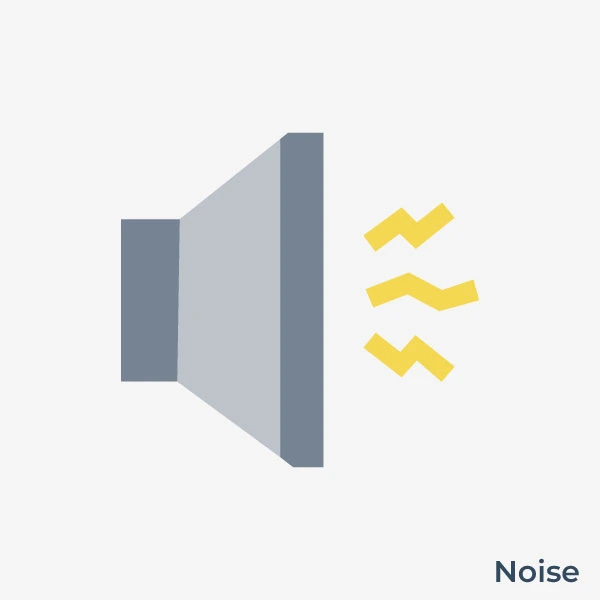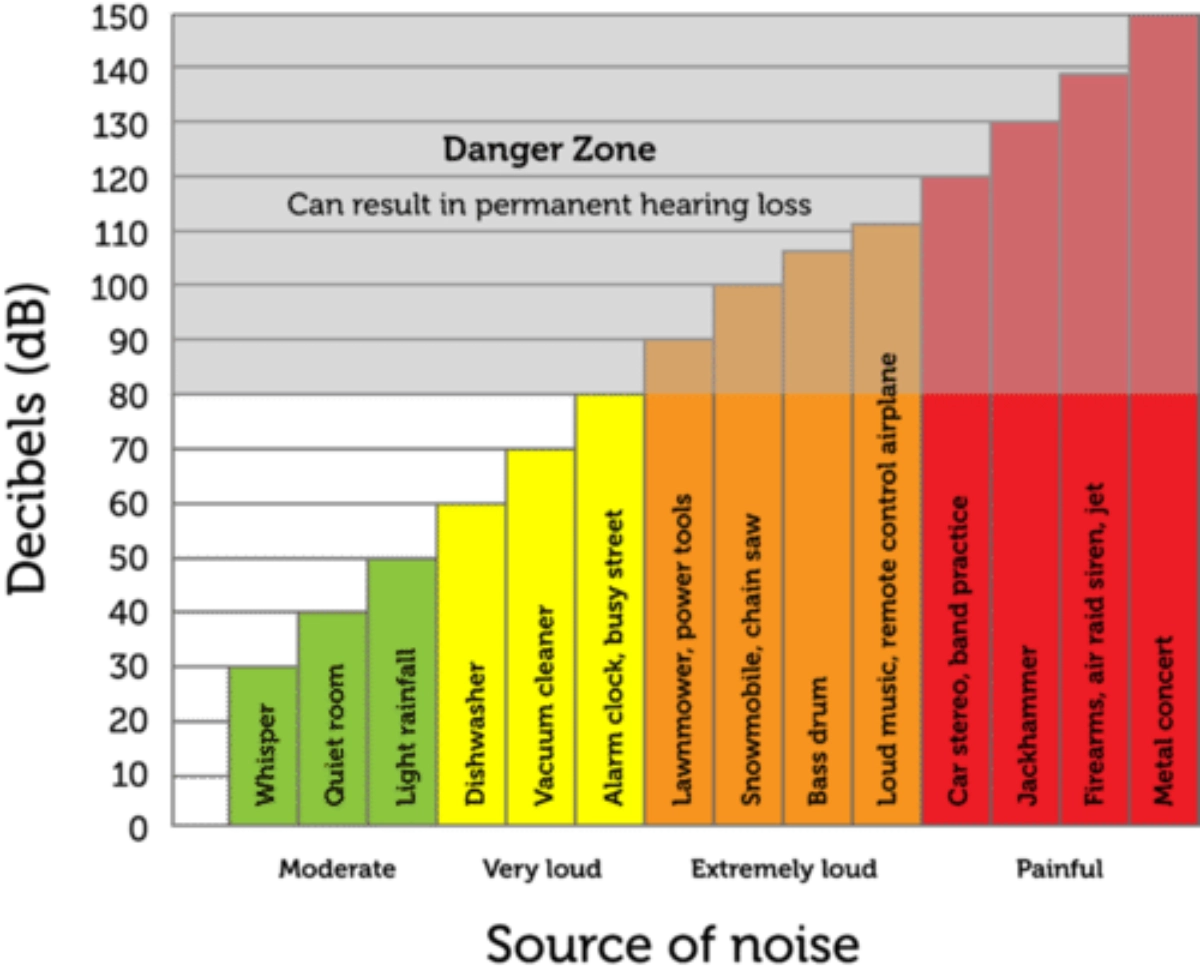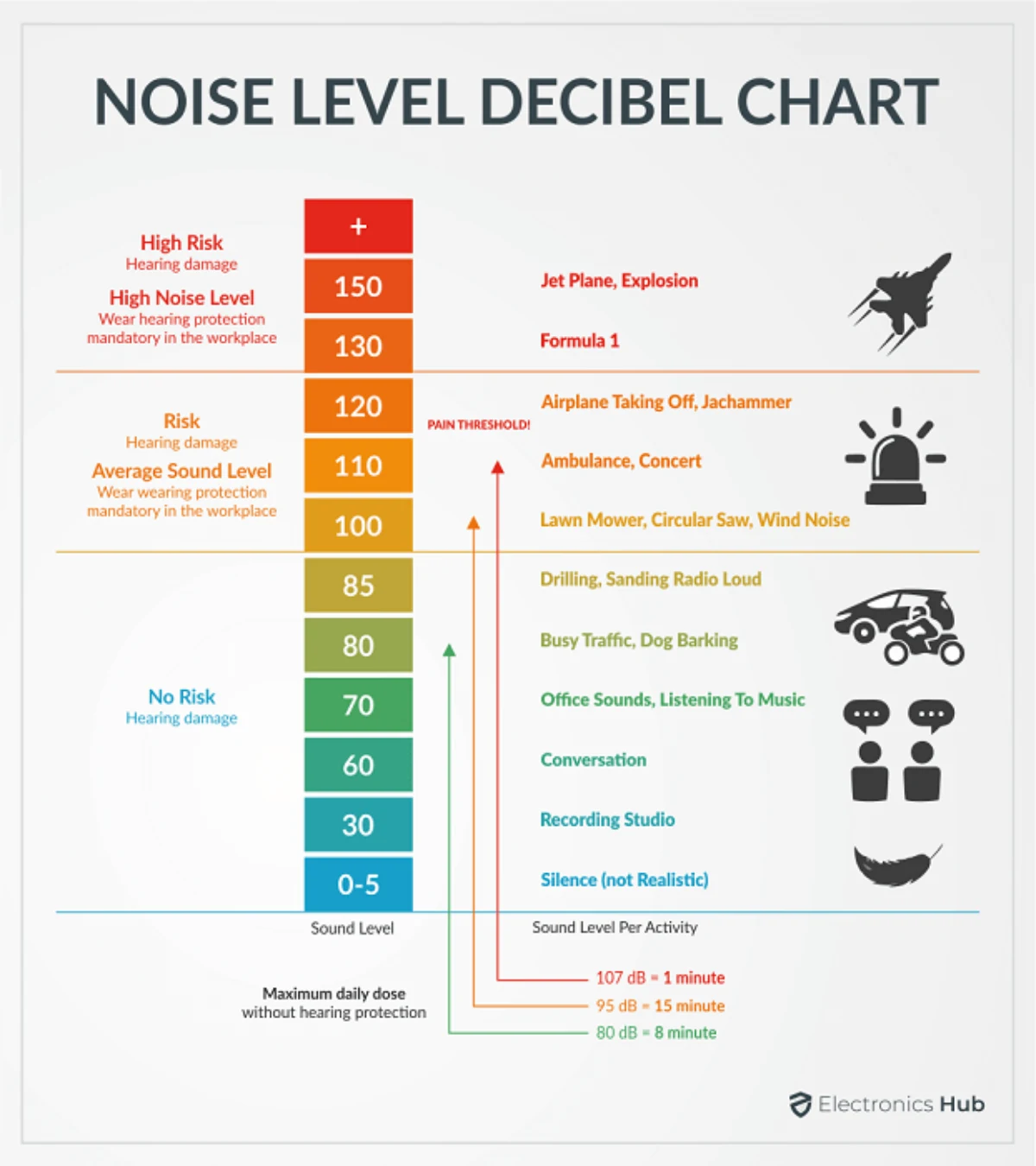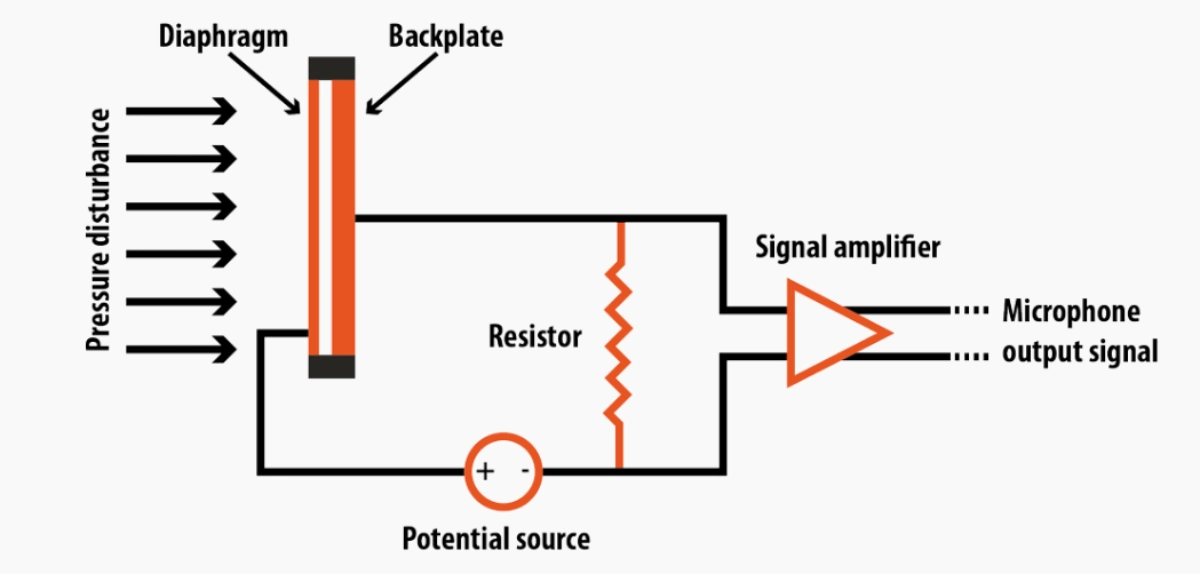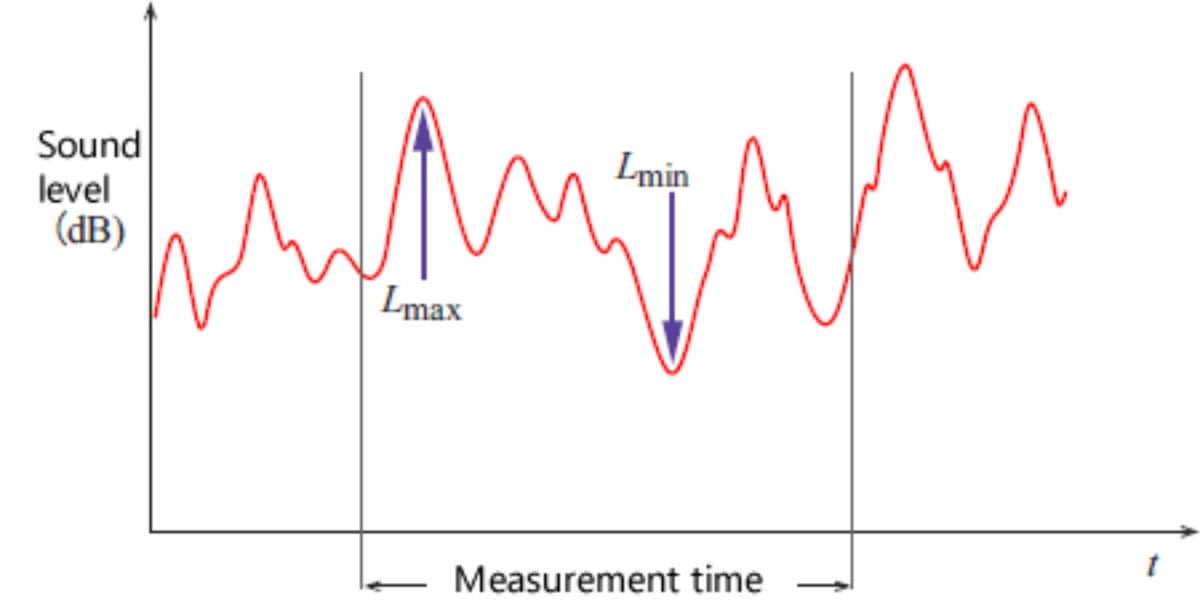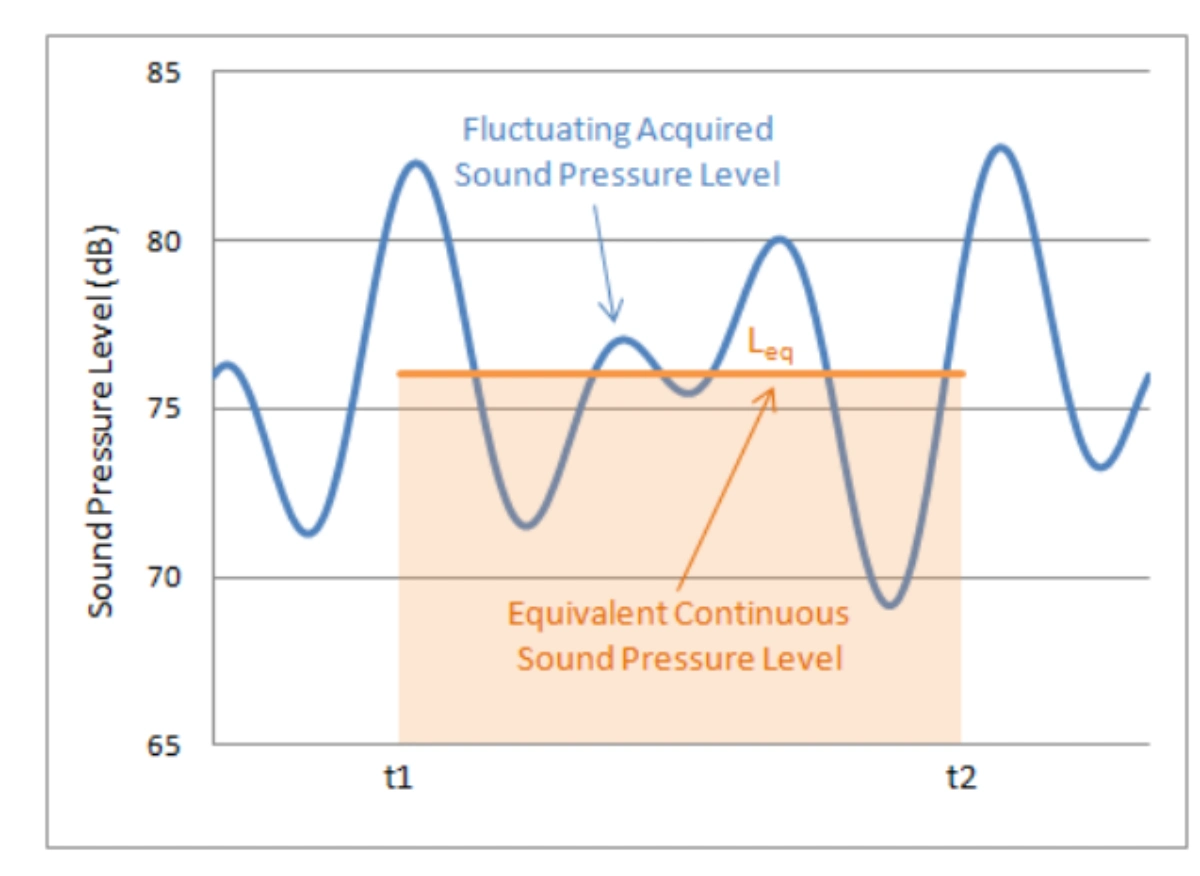Noise is a type of sound and is defined as unwanted, annoying, unpleasant, or loud. Noise pollution is an invisible danger. Noise pollution is an often overlooked environmental issue, yet it significantly impacts both human health and the environment. In our rapidly urbanizing world, constant exposure to high levels of noise from traffic, construction, and industrial activities disrupt not only daily life but also the natural habitats of animals. It is sounds or noises that are either unnatural in volume or production.
For humans, prolonged noise exposure is linked to health problems like stress, sleep disturbances, and even cardiovascular issues. Noise pollution can also cause annoyance, stress, and interference with speech communication. The first step in dealing with noise is the identification of areas or operations where excessive noise exposure occurs, which is done through noise monitoring. This article covers information on Noise as a pollutant, its sources, permissible limits, health and environmental impact, corrective measures and methods, and principles of monitoring noise.
What is Noise?
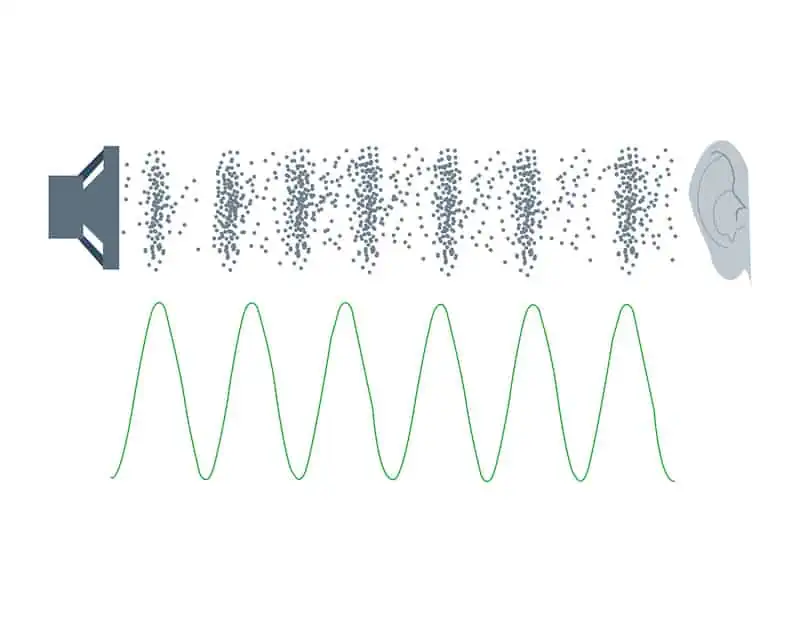
The Air (Prevention and Control of Pollution) Act 1981 defines noise as an air pollutant and defines it as “unwanted or undesired sound.” Noise is considered an air pollutant when it is present in the atmosphere at a concentration that can be harmful to humans, plants, animals, or the environment.
Difference between Noise and Sound
Noise and sound are two closely related but separate concepts in acoustics and communication. Sound is any audible vibration of air particles that travels through a medium, such as air, water, or solids. It is a physical phenomenon that can be perceived by the human ear and has properties including frequency, amplitude, and waveform.
On the other hand, noise is defined as any undesired or irritating sound that causes bodily discomfort. It is a sound considered unwanted or unimportant in a setting or scenario. Noise is defined by its randomness, irregularity, or unpredictability, and it can come from various sources, including equipment, traffic, people, or environmental variables.
The main difference between noise and sound is that noise is a subjective experience of undesired or annoying sounds. In contrast, sound is a physical occurrence that can be intentional or desired. Furthermore, while sound can positively impact human emotions and behavior, noise can create stress, discomfort, and even health problems in some situations.
Sound Waves are generated by the continuous vibration of a source that pushes the molecules of the air in a series of condensation (crowding together of the molecules) and rarefaction (thinning out of the molecules), creating a wave-like structure that travels through the medium disturbing the particles. Sound intensity can be measured by decibels (dB).
Characteristics of Sound or Noise
Frequency and Loudness: The atmospheric pressure varies periodically when sound travels through the air. Frequency is the number of sound waves (i.e., complete cycles of high and low-pressure regions) propagated through the air per second. It is measured in Hertz, i.e., number of cycles per second. The higher the frequency, the more high-pitched a sound is perceived. The range of frequencies the human ear hears is 20 Hz – 20,000 Hz. The human ear has a peak response of around 2,500 to 3,000 Hz and has a relatively low response at low frequencies.
Source- https://www.safeacoustics.com/frequency-of-sound/#:~:text=The%20human%20ear%20has%20its,response%20of%20the%20human%20ear.
Loudness is the subjective perception of sound pressure, dependent on the energy the ear receives in unit time. Intensity is a measure of the amount of energy in sound waves. It is the power carried by sound waves per unit area in a direction perpendicular to that area. The SI intensity unit is the watt per square meter (W/m2). It can be applied to locate the noise source in terms of energy.
Humans hear high-frequency noise much better than low-frequency noise. Noise measurement readings can be adjusted to correspond to this peculiarity of human hearing. An A-weighting filter built into the sound-measuring instrument de-emphasizes low frequencies or pitches[2]. Decibels measured using a sound meter equipped with this filter are A-weighted and are called dB(A). A perceived loud noise has a high dB or dB(A) value, and a soft noise has a low one. The typical decibel levels of different sounds are given below:
With the increased decibel levels, sound waves have greater intensity, and the sounds become louder. A total silence means 0 decibels. For every 10-decibel increase in sound intensity, loudness is ten times greater. For example, a 30-decibel “quiet” room is ten times louder than a 20-decibel whisper, and a 40-decibel light rainfall is 100 times louder than a whisper.
Sources of Noise
Various human activities contribute to noise pollution. This can cause discomfort for humans, especially young children, the elderly, and animals. Some common sources of noise pollution are:
The sources of noise are classified into –
Industrial Noise
Industries generate noise at every stage, like welding, hammering, drilling, blowing, running machinery, motors, sheet metal work, lathe machine work, operation of cranes, grinding, turning, riveting, fabricating, forging, compressing, vacuuming, breaking, molding, steaming, boiling, cooling, heating, venting, painting, pumping, packing, transporting, etc.
Mechanical noise is a major part of industrial noise. This is due to machinery of all kinds, which often increases with the machines’ type of operation and power capacity.
Non – Industrial Noise
Non-industrial noise sources include the noise created by transport/vehicular traffic and neighborhood noise. Some common sources are noted below,
- Road Traffic Noise – The most widespread noise source and is directly proportional to the volume of vehicles. The major noise sources in automobiles are exhaust, intake, engine, fan, and tires at high speed.
- Noise from railroads – Noise from locomotive engines, horns and whistles, and switching and shunting operations in rail yards can impact neighboring communities and railroad workers.
- Construction Noise – Noise from the construction of highways, city streets, and buildings is a major contributor to the urban scene. Construction noise sources include pneumatic hammers, air compressors, bulldozers, loaders, dump trucks (and their backup signals), and pavement breakers.
- Residential Noise – Noise generated from day-to-day activities in households and residents such as exhaust Fans, lawn movers, mixes, grinders, fans, cooling & heating systems, T.V & Music systems, motors used for pumping, etc.
- Entertainment activities: Loud music, fireworks, and other activities can generate excessive noise. Long-term exposure to high noise during leisure activities can result in hearing loss and other health concerns.
- Natural Disaster: Natural disasters such as earthquakes, hurricanes, volcanic eruptions, tornadoes, and thunderstorms can all contribute to noise pollution by producing loud winds, thunder, and other similar sounds.
Did you know this? A new study indicates that airplane noise may increase one’s risk of developing cardiometabolic diseases, a cluster of conditions such as heart attack, stroke, diabetes, and hypertension.
Permissible Exposure Limits for Noise
Indian Standards
According to Noise Pollution (Regulation and Control) Rules, 2000 by the Government of India, the permissible ambient noise levels for different areas/zones are: –
|
Area Code |
Category of Area/Zone |
Limits in dBA, Leq |
|
|
Day Time (6 am – 10 pm) |
Night Time (10 pm to 6 am) |
||
|
A |
Industrial Area |
75 |
70 |
|
B |
Commercial Zone |
65 |
55 |
|
C |
Residential Area |
55 |
45 |
|
D |
Silence Zone |
50 |
40 |
OSHA Standards
OSHA (Occupational Safety and Health Administration), sets noise exposure limits at an employee’s location for environments of steady noise, mixed noise, and impact noise. Protection against the effects of noise exposure shall be provided when the sound levels exceed those shown in Table –
|
Duration per day, hours |
Sound level dB(A) |
|
8 |
90 |
|
6 |
92 |
|
4 |
95 |
|
3 |
97 |
|
2 |
100 |
|
1.5 |
102 |
|
1 |
105 |
|
0.5 |
110 |
|
<0.5 |
115 |
Impact of Noise
Health Impact:
High noise levels can harm humans, animals, wildlife, and the ecosystem. Noise at high levels can cause sleep disturbance, anxiety, hearing damage, and cardiovascular health problems.
Noise can affect health in many ways, including auditory and non-auditory effects.
Auditory effects
- High levels of noise cause auditory symptoms such as hearing loss and tinnitus.
- Noise-induced hearing loss typically occurs gradually and without pain. It is, in fact, a cumulative effect. However, there are some early warning signs, such as buzzing in the ears and muffling of sounds, that should not be avoided.
- Speech Interference – Noise interferes with our ability to communicate. The noise levels, not enough to cause hearing impairment, can interfere with speech communication (conversations).
Non-auditory effects
- Non-auditory effects can occur at low but consistent environmental noise levels, even if we believe we have adapted to it. This is because our bodies react to everyday and continual noise exposure (for example, by activating hormonal reactions), even if we are unaware of it.
- Non-auditory impacts include chronic discomfort, sleep disturbance, cognitive impairment, and cardiovascular and metabolic diseases.
According to the World Health Organization, sound levels less than 70 dB are not damaging to living organisms, regardless of how long or consistent the exposure is. Exposure for more than 8 hours to constant noise beyond 85 dB may be hazardous.
Did you know this? The EEA also estimates that 22 million people suffer from chronic high levels of annoyance and 6.5 million people suffer from chronic high levels of sleep disturbance as a result of long-term noise exposure.
Environmental Impact:
Noise pollution can harm the environment, particularly animals and ecosystems. Some of the negative consequences include:
- Marine animals are also affected by noise from various human activities, including commercial vessel traffic, oil and gas exploration, seismic surveys, and military sonar. These human activities can produce noise that can be larger than 200 dB.
- Marine creatures such as dolphins and whales use the method of echolocation for communication, but their way of communication is affected due to external noise. Whales can no longer navigate through water and are often found stranded onshore.
- Insects that pollinate are affected by noise, and they may disappear, causing an indirect impact on plants and animals.
- Excessive noise can impact plant growth and development, causing changes in ecosystem structure.
Possible Corrective Measures
The primary action is noise monitoring, i.e., measuring how much noise is generated/produced. In addition to this following corrective measures can be taken:
Engineering Controls: Modification or replacement equipment or making related physical changes at the noise source or along the transmission path to reduce the noise level at the worker’s ear.
This can be achieved by: –
- Opting for low noise generation tools and machinery.
- Maintenance and lubrication of machinery and equipment.
- Barrier placement between the noise source and the employee.
- Isolation of noise source.
Administrative Controls: Changes in the workplace or schedule that reduce or eliminate the worker’s exposure to noise.
- Operating noisy machinery when fewer workers are exposed.
- Limiting the amount of time a person spends at a noise source
- Providing quiet areas to escape from noise
Preventive measures for Ambient Noise Pollution
The following steps can be taken to prevent exposure to ambient noise.
- Making an accountable effort to reduce noise like stringent standards by the authorities.
- Maintaining a quiet neighborhood
- Using alternative means of transport, such as walking, bicycles, or electric vehicles instead of noisy vehicles.
- Getting vehicles checked and lubricated regularly to reduce noise.
- Substitution of quieter equipment via modification in design or engineering
- Reporting to authorities if noise generation is considered illegal in any regard (loud noise during night or above permissible limit).
- Using ear protection equipment.
Noise Monitoring Principle
A source generating the sound creates vibrations in the surrounding propagating medium. As the sound continues, the vibrations propagate away from the source at the speed of sound, forming a sound wave.
Noise is measured using a microphone. It measures sound pressure waves at a variety of frequencies, including the entire range of human hearing and even beyond. Simply put, a microphone is a sensor or transducer that converts sound (acoustic energy) into electrical energy.
The most common type of microphone for sound measurement is the condensor type that operates on a capacitive design. It incorporates a thin metal diaphragm that forms one plate of a capacitor and a metal plate is placed next to it that acts as a backplate. When the sound wave excites the diaphragm, the capacitance between the diaphragm and the backplate changes according to the variation in the sound pressure.This change in capacitance generates a proportional AC signal that is amplified, measured, digitized and analyzed to get the noise measurement.
The noise level is recorded and represented in terms of Lmax, Lmin, and Leq
Lmax, the maximum sound level, during a measurement period while Lmin, the minimum sound level, during a measurement period.
Leq, or Equivalent Continuous Sound Pressure Level, is the fundamental measurement parameter designed to represent a varying sound source. It is the sound level having the same total sound energy as the fluctuating level measured. It is calculated using the below equation:
Here,
Leq = equivalent continuous sound pressure level in dB
p0 = reference pressure level (typically 20 µPa)
pA = measure sound pressure level by the microphone
t1 = start time for measurement
t2 = end time for measurement
Oizom’s Sensor Working Principle for Noise Monitoring
Oizom’s Class 2 Noise Sensor accurately measures noise levels in the ambient air. The lightweight sound level monitor design can monitor ambient noise in real-time. The advanced support electronics of this sensor make it compact and reliable. This sound level meter provides a direct reading of sound level in decibels (dB).
This noise sensor module works on the principle of capacitance. It provides a uniform response to sounds arriving from different angles simultaneously.
Our outdoor air quality monitoring systems like Polludrone, Weathrecom, Dustroid, Odosense, and AQBot use the noise sensor module. Therefore, this module is ideal for monitoring ambient noise in smart cities, construction sites, airports, roadsides, industrial applications, etc.
NOTE: Class I Noise sensors are available as optional features upon specific customer request.
Reasons Why Noise Monitoring is Important
Noise monitoring is a crucial aspect of environmental and occupational health. Here are five reasons why it’s essential:
- Protection of Hearing Health: Excessive exposure to noise can lead to hearing loss, tinnitus, and other auditory disorders. Noise monitoring helps identify areas with high noise levels, enabling preventive measures to protect workers’ and residents’ hearing.
- Compliance with Regulations: Many countries have strict regulations regarding noise pollution. Noise monitoring ensures compliance with these laws, preventing legal issues and fines.
- Improvement of Work Environment: High noise levels can negatively impact productivity, morale, and communication. Noise monitoring helps identify noise sources and implement measures to create a quieter and more comfortable work environment.
- Community Health and Well-being: Noise pollution can disrupt sleep, increase stress, and contribute to cardiovascular problems. Monitoring noise levels helps protect the health and well-being of communities.
FAQs
1. What is environmental noise pollution?
Environmental noise pollution refers to unwanted or harmful sounds from traffic, industrial activity, or construction that can disrupt human health and wildlife habitats.
2. How does noise pollution affect human health?
Prolonged exposure to high noise levels can lead to stress, sleep disturbances, hearing loss, and cardiovascular issues. Monitoring noise levels helps mitigate these risks.
3. What are the key sources of noise pollution?
Common sources include road traffic, industrial machinery, construction sites, and public events. Identifying these sources is crucial for managing noise pollution.
4. How is noise pollution measured?
Noise pollution is measured using decibel (dB) levels through sound level meters or specialized noise sensors, helping monitor compliance with noise regulations.
5.What are effective ways to reduce noise pollution?
Sound barriers, green buffers, urban planning, and using quieter machinery can help reduce noise pollution and protect both human health and the environment.

